[ad_1]
![]()
I’ve been utilizing the Panasonic GH6 for a number of months so we might present a long-term evaluate for what was as soon as a hotly-anticipated successor to the very talked-about GH5.
A particular thanks to Lensrentals for offering among the lenses used on this evaluate. The corporate’s full record of obtainable gear, each for rental and on the market, could be perused on its web site. Private notice: the yearly subscription for Lensrentals HD is effectively price it when you lease an honest quantity of drugs.
What’s New
![]()
For the primary time in seven years — because the launch of the Panasonic GX8 — we have now a decision bump on a 4 Thirds sensor. The GH6 includes a newly developed 25.2MP (efficient) CMOS sensor with out a low-pass filter that produces information with a decision of 5,776 by 4,336 pixels. This yields an approximate 11% enhance in linear decision in comparison with its predecessor — not big, however 25MP appears to be like nicer than 20MP on paper. Photos and video are processed by the brand new Venus Engine, which Panasonic claims is twice as quick because the prior model.
The brand new sensor additionally options the bottom base ISO of a 4 Thirds sensor up to now — ISO 100, which is a full cease decrease than the GH5 in addition to the OM System OM-1 and former Panasonic/Olympus cameras. In concept, this hopefully means higher dynamic vary, colour depth, and noise.
Let’s get the opposite headline specs out of the way in which: inner UHD and DCI 4K 10-bit 4:2:2 as much as 60 fps, UHD and DCI 4K 10-bit 4:2:0 120 fps, DCI 5.7K as much as 60p, 5.8K full-sensor (5760 x 4320) open gate/anamorphic recording as much as 30p, ProRes 422 and ProRes 422 HQ internally, 12-bit ProRes RAW out through HDMI, full V-Log and V-Gamut profiles, CFexpress Kind B and UHS-II SD card slots, IBIS as much as 7.5 stops, built-in fan for energetic cooling, 1.84M-dot tilting and articulating touchscreen, 3.68M-dot OLED EVF with 0.76x (equal) magnification, full-size HDMI 2.1 port, 10Gbps USB-C port, Timecode In/Out through the flash synchro socket (with BNC adapter), and as much as 75 fps in e-shutter (AF/AE locked).
![]()
It’s additionally now doable to add your personal customized LUT — or lookup desk — within the .CUBE format to make use of along side Show Help Mode when capturing Log video. Firmware v2.0 launched in July enabled DCI 4K/120p and DCI 5.7K/60p ProRes RAW to an Atomos Ninja V+ over HDMI, in addition to open gate recording as much as 5.8K/30p and 4.4K/60p.
Direct recording to exterior SSDs through USB-C was additionally simply added lower than a month in the past, making this solely the third hybrid digicam with such a characteristic behind the Sigma fp and fp L — and is accessible from Panasonic’s web site.
Creator’s notice: Lenses used on this evaluate: Panasonic Leica 12-60/2.8-4 DG Vario-Elmarit, Olympus M.Zuiko 12-100/4 IS Professional, OM System M.Zuiko 40-150/4 Professional, Olympus M.Zuiko 100-400/5-6.3 IS, and the Laowa Argus 25/0.95 APO (my evaluate right here).
Physique, Dealing with, and Menu
Maybe essentially the most outwardly apparent change with the GH6 is its physique, which is now very a lot according to the stellar Panasonic S1H. The entrance has gained a really welcome second perform button together with a giant purple report button. The grip is now considerably deeper, and the shutter button is inclined a bit extra steeply.
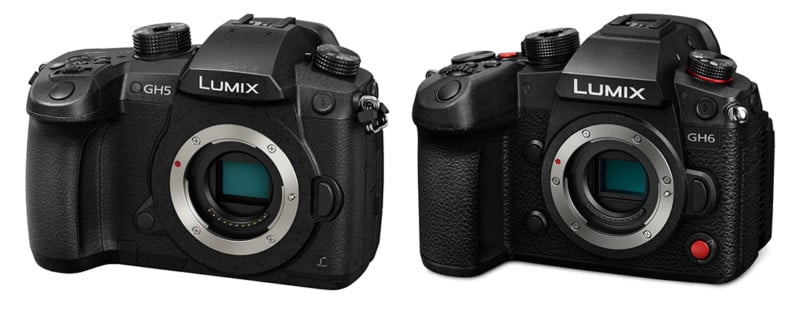
The highest of the digicam is comparatively the identical, with a number of rearranged buttons that make use of the additional house. I actually do love the dealing with, grip, and button placement of this digicam. All the pieces feels pure and there’s loads of room for all my fingers whereas holding the digicam.
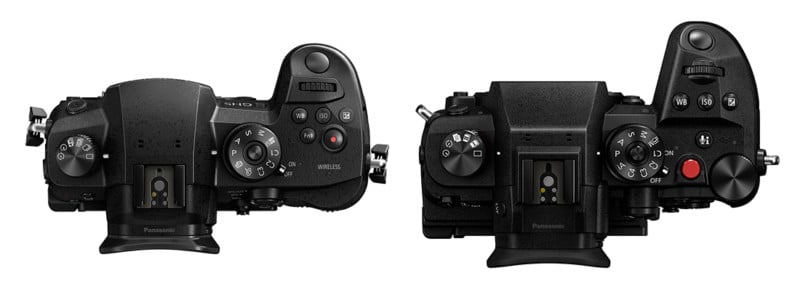
The rear of the GH6 sees lots of changes — the joystick and Show buttons have been relocated, there’s a brand new AF ON button, and issues are typically rather less cluttered. The nook of the digicam curves out a bit extra sharply, which provides your thumb a pleasant, comfy place to relaxation.
After which there’s the LCD display screen — maybe the very best implementation on any fashionable mirrorless digicam that’s right here in addition to on the S1H. It’s extraordinarily versatile, with the flexibility to each tilt and swing out, and it’s positioned far sufficient again that it by no means interferes with any cables plugged into the aspect. The touchscreen itself could be very responsive, as effectively.
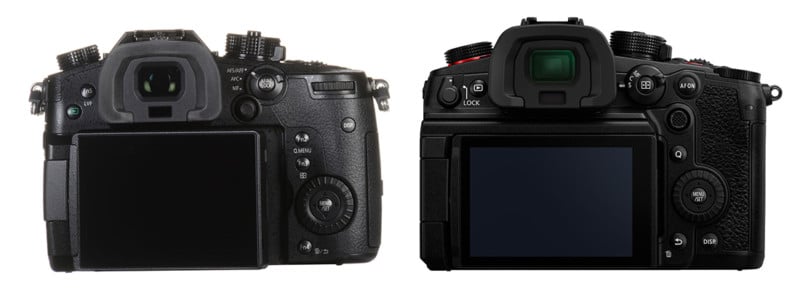
This dual-hinging display screen, together with the built-in fan, does imply the physique is considerably thicker and considerably heavier — it’s really solely gained about 13.5% (98 grams), which shocked me. I believe the bigger physique provides some visible weight.
Together with the reformed physique the GH6 inherits the upper capability 2200mAh DMW-BLK22 lithium-ion battery from the Panasonic S5, which is CIPA rated for about 360 photographs. As common, CIPA scores are rubbish — I used to be getting effectively over 1,000 photographs per cost, and I hardly ever take greater than a single picture of one thing except I’m doing wildlife images. Fortunately, Panasonic means that you can set the EVF to auto on/off, with the monitor completely off aside from menu and playback (mainly precisely like a DSLR). That is how I exploit my Nikon (“Prioritize Viewfinder” mode) and I want different corporations — Sony, Fujifilm, Canon, OM System, and so on. — would permit the identical.
![]()
With that stated, battery life is unquestionably extra of a problem when you’re capturing video. Sadly, for some cause, that is the primary GH mannequin to not supply a vertical battery grip — and there aren’t any contacts on the underside for one — however a minimum of it may be powered and charged over USB-C.
The menu could be very a lot a recognized amount when you’re a Panasonic person, which is to say that it’s excellent. Easy to navigate — a minimum of as a lot as a digicam with this many choices could be — and truly fairly simple to get a dangle of even when you don’t use Panasonics frequently.
![]()
Like OM System/Olympus, there’s no solution to bias Auto ISO to make use of shutter speeds slower than 1/FF-equivalent Focal Size. For instance: in case your minimal shutter pace is about to auto and also you’re at 60mm, the digicam will default to a minimal shutter pace of 1/125. Your solely different possibility is to decide on your personal minimal, however that is mainly completely ineffective when you’re utilizing a zoom lens and requires you to alter it each time you swap a lens. Why do the 2 corporations which have arguably the very best IBIS within the business do that?
I might recognize it if the digicam would cease asking to substantiate the focal size knowledge of unchipped lenses each time you cycle energy. I don’t see a solution to disable this.
Autofocus Efficiency
To the chagrin of many customers, Panasonic opted to not make the transfer to PDAF (part detection autofocus), as an alternative selecting to stay by its DFD (“Depth From Defocus”).
![]()
DFD is a proprietary type of contrast-detect autofocus which capabilities by utilizing a database of details about the out-of-focus parts of various lenses after which builds a depth map of the scene. Because it’s contrast-based, the lens is continually making tiny microfocus changes. Efficiency, nevertheless, is superior to common distinction detection, particularly for transferring topics the place the digicam makes use of deep-learning AI topic recognition. The largest problem right here is each processing energy and sensor readout — the digicam can solely replace its depth map as typically because it receives new data.
![]()
The benefit for stills capturing (versus video) is that creating this depth map could be completed through a lower-resolution and decrease bit-depth feed, therefore growing the readout and subsequently the variety of calculations. Mix that with its extra highly effective Venus Engine processor and the outcomes are fairly good.
There are two main niggles, nevertheless: an sometimes seen flicker within the EVF, which is a results of the lens shortly racking focus backwards and forwards, and DFD’s reliance on its lens library. As a result of latter, DFD doesn’t work with something aside from Panasonic lenses. That is one among my large points with Panasonic and OM System/Olympus normally — regardless of Micro 4 Thirds being an “open customary that offers you the liberty to mix digicam our bodies and interchangeable lenses past producers’ boundaries,” there are a lot of compatibility points between the 2 manufacturers. Panasonic OIS and the aperture rings on its lenses don’t work on Olympus/OM our bodies, nor does Olympus IS work on Panasonic our bodies. I actually want the 2 corporations would get collectively and repair these points.
![]()
I really don’t have an enormous downside with DFD so far as stills capturing goes. The digicam is fast to focus and lock on and has glorious topic monitoring, although it’s lower than the extent of the OM-1. However we shouldn’t anticipate it to compete with a stacked quad-pixel AF sensor.
Nonetheless, DFD nonetheless stays poor for video AF monitoring. Sure, it’s undoubtedly improved from the GH5 and G9, however the identical autofocus “flutter” that seems within the EVF can be current within the video — that is merely a consequence of the digicam’s skill to investigate the scene and alter accordingly, particularly at solely 24 or 30 frames per second. DFD really works higher when capturing larger frame-rate video for that reason.
![]()
RAW Stills High quality
Panasonic humorously answered the query that’s all the time requested about new sensors earlier than it was even requested by stating that the sensor is “not made by the corporate everybody all the time assumes we use” — it’s in all probability protected to say the corporate everybody all the time assumes they use is Sony. Personally, I don’t actually care who made the sensor (it actually doesn’t matter); implementations of the colour filter array, microlenses, ADC, and the final imaging pipeline and algorithms will sometimes make much more of a gross distinction in output.
![]()
The GH6 brings one thing new to the desk for a hybrid stills/video digicam — twin output achieve, or “Dynamic Vary Enhance Mode” as Panasonic phrases it. This isn’t the identical because the now quite common twin conversion achieve sensors we see in most up-to-date cameras, particularly these constructed utilizing Sony sensors (initially developed by Aptina for the Nikon 1-series). Neither is it the identical as “twin native ISO” or “twin base ISO” — resembling within the Sony FX9 and Venice cameras. These sensors use two completely different circuits, every with its personal base ISO, and swap between one or the opposite.
Like Canon’s Twin Achieve Output (DGO), discovered within the Canon EOS C300 Mark III and Canon C70, and Arri’s Twin Achieve Structure present in all of its Alexas, the GH6 sensor integrates two simultaneous read-out paths, every of which collects mild in parallel. One path captures the common sign, whereas the second makes use of a decrease amplification sign for knowledge that was clipped by the primary path. These are then fed into the digicam’s ADC (analog-to-digital converter) the place they’re mixed for enhanced dynamic vary.
![]()
Sadly, Dynamic Vary Enhance solely works three stops above base ISO, which for stills is ISO 800. This wouldn’t inherently be a nasty factor if it weren’t for the lackluster efficiency of the sensor between ISO 100 and ISO 800. At base ISO, the GH6 trails the OM System OM-1 by about 1 EV.
When you account for the bottom ISO of 200 for the OM-1, the distinction turns into even starker — the GH6 pushed from ISO 100 to ISO 1600 (4 EV) is quickly bested by the OM-1 pushed from ISO 200 to ISO 1600 (3 EV) and even nonetheless worse than the OM-1 pushed one other cease to ISO 3200. On the decrease ISOs, the GH6 is even bettered by the unique Olympus E-M5 from a decade in the past if you enhance shadows or publicity.
![]()
At ISO 800 the DR Enhance mechanically engages and the GH6 is nearly on par with the OM-1. The OM-1 nonetheless pushes higher, suggesting there’s nonetheless extra dynamic vary on faucet, however the distinction just isn’t practically as vital.
The GH6 just isn’t ISO invariant; the picture turns into overwhelmed by chroma noise and a severe magenta shift fairly simply when pushed however produces significantly better outcomes if shot in-camera on the similar equal ISO. For instance, ISO 400 is far cleaner than ISO 100 pushed by 2 EV. This isn’t a digicam that you simply wish to underexpose to guard highlights, which did trigger me some points in a number of conditions — the OM-1 (and each different Olympus digicam) can merely deal with tougher lighting.
![]()
Colour is one thing that’s fairly necessary for me and is just not as simple to repair in submit as many individuals recommend — even utilizing a ColorChecker to make a profile is not going to clear up every little thing. I worth correct and pure colour over “pleasing” colour for a similar cause I worth extremely corrected lenses: the transparency of the information permits the instruments to get out of the way in which and let me do my job from a impartial place to begin. Colour accuracy can be of the very best precedence for some forms of images (meals, vogue, or vehicles, for instance).
![]()
I’ve all the time discovered Panasonic colours a bit troublesome to take care of, particularly the reds, which skew closely pinkish. Yellow is overwhelmed by inexperienced too, which makes foliage require some work — the inexperienced channel is closely influenced by yellow and, to be honest, is a really troublesome colour for each digicam. Other than Hasselblad’s very impartial output, I have a tendency to love Olympus/OM and Nikon’s hotter method that biases greens a bit yellower.
None of that is helped by the auto white stability, the place the GH6 typically will get the colour temperature very shut (although errs barely on the cool aspect) however provides an extreme quantity of constructive magenta tint — e.g., 5300K and +20 tint when it ought to be 5450K and +1 tint. This half is well fastened utilizing the attention dropper in ACR however getting the colours proper does require some considered use of the HSL sliders.
![]()
Out of Digital camera JPEGS
I’m not too impressed with the GH6’s JPEG output. It appears higher than different Panasonic cameras I’ve used previously, however superb element continues to be fairly horrible (even with noise discount dialed all the way in which down) and, just like the RAW information, reds are too pink, and yellows are too inexperienced.

Once more, auto white stability negatively impacts the outcomes right here, particularly in purple tones. As soon as I bought a really feel for the way the digicam would reply utilizing auto WB, I used to be in a position to alter this in-camera to an honest diploma.
Olympus/OM System is, for my part, the gold customary for straight out of digicam JPEGs. Even the default colours of the OM-1’s “Customary” profile are fairly correct and never overly saturated (the “Pure” profile is even higher), and its noise discount — which appears to be extra refined — is impeccably carried out with little impact on superb element replica. The GH6 merely can not sustain right here.

With that stated, I do just like the Pure, CineLike V2, and L.Traditional Neo profiles for colour, whereas L.Monochrome D is my alternative for black and white. After some minor changes to style, in addition to fine-tuning of the auto WB, I used to be comparatively pleased with these. Simply be sure to show the noise discount all the way in which down except you need a smeary mess.

Under are a number of extra pattern photographs:
![]()
![]()
![]()
Video
Right here at Petapixel, we are likely to give attention to images. Nonetheless, if you’re reviewing a digicam just like the Panasonic GH6, it will be somewhat a bit slipshod to not a minimum of speak about its video efficiency as effectively.
There are lots of upgrades from the GH5 and GH5 II, however plenty of them stand out particularly. The redesigned physique, particularly with its wonderful tilting/articulating LCD display screen and built-in fan, is essentially the most vital distinction at first look. Internally, although, there’s so much new below the hood.
![]()
The flexibility to shoot DCI 5.7K (17:9) and 5.8K open gate (4:3) is now doable because of the upper decision sensor. Whereas many people use open-gate recording in live performance with anamorphic lenses, I discover it extraordinarily precious in its personal proper. The flexibility to reframe vertically with none decision loss, further decision for digital stabilization and digital panning, and higher latitude for facet ratios narrower than 17:9, are all big benefits.
There are a plethora of different superior options that we don’t often see exterior of devoted cinema cameras: timecode in/out, genlock, shutter angles, customized LUT assist with View Help, waveform monitor, vectorscope, security zone markers, tally lamps, luminance spot meter, anamorphic desqueeze, colour bars and check tone, built-in facet ratio markers (plus customized choices), variable body charges, clean preset focus transitions, synchro scan, and HLG (Hybrid Log Gamma) which conforms to the BT.2100 HDR customary.
![]()
Let’s speak about picture high quality. As we are able to see, the GH6 brings so much new to the desk, nevertheless it steps up IQ and flexibility in a number of very essential methods: inner 10-bit 4:2:2 ProRes HQ, 12-bit ProRes RAW, full V-Log as an alternative of V-Log L (and at no extra price), a brand new sensor with sooner readout and better decision, and Dynamic Vary Enhance.
I don’t have a GH5 to match on to the GH6, however I do have a Blackmagic Pocket Cinema Digital camera 4K, which I’ve in contrast in opposition to a GH5 previously. As a devoted cinema digicam, it’s a pure competitor to the GH6, although with barely completely different goal audiences. I don’t have an Atomos Ninja, so I’ll be utilizing the inner 10-bit 4:2:2 ProRes HQ on the GH6 and the identical on the BMPCC4K, in addition to the inner 12-bit BRAW.
![]()
Because the BMPCC4K includes a 17:9 sensor (18.96 x 10mm) that’s barely wider and barely taller than the DCI 17:9 crop from the GH6 (17.2 x 9.06mm), the distinction in angle of view is the very first thing you’ll discover. It’s not big — the BMPCC4K sensor is about 22% bigger in space, giving the GH6 a 1.1x crop. The GH6’s open gate, nevertheless, is about 18% bigger in space than the broader BMPCC4K sensor. A negligible distinction in apply, both means.
The subsequent factor you’ll discover are variations in colour (no shock there), noise, and sharpness. I’ve fitted my BMPCC4K with a customized UV/IR low-pass filter and the Panasonic has no low-pass filter, which implies it already has a leg up in resolving superb element. The GH6 additional advantages from its DCI 4K oversampling, however there’s additionally some apparent sharpening being added by the imaging pipeline, particularly in comparison with the Blackmagic’s BRAW. This was additionally true for the GH5.
![]()
Unsurprisingly, the GH6 produces information with the identical annoyingly pinkish hue because the GH4, GH5, S1, and S1H. That is extra of a private choice than anything, however I’ve all the time discovered that pink tint to make colour correcting a bit extra of a exercise. Nonetheless, the GH6 appears to have a greater IR-cut filter than the Blackmagic natively does; this implies blacks aren’t as stricken by IR contamination when utilizing ND filters. That is particularly good for the GH6, as a result of…
The brand new DR Enhance mode is nice and undoubtedly does what Panasonic claims — cleaner shadows and mid-tones with prolonged spotlight DR — however because it solely engages at three stops above base ISO, which is ISO 250 in V-Log, you received’t benefit from it till ISO 2000. In different phrases, with DR Enhance enabled, your minimal ISO in V-Log is 2000. This might be superb if dynamic vary was related at each ISO 250 and ISO 2,000 as it’s on the BMPCC4K (twin native ISOs of 400 and 3200). Sadly, it’s not — with out DR Enhance enabled, you lose about 1.5 to 2 EV of dynamic vary, placing it about two stops behind the BMPCC4K at ISO 400. At ISO 2000 and DR Enhance enabled, I’d say it’s about on par with the Blackmagic (ISO 3200), however there’s nonetheless a bit extra flexibility within the 12-bit BRAW information.
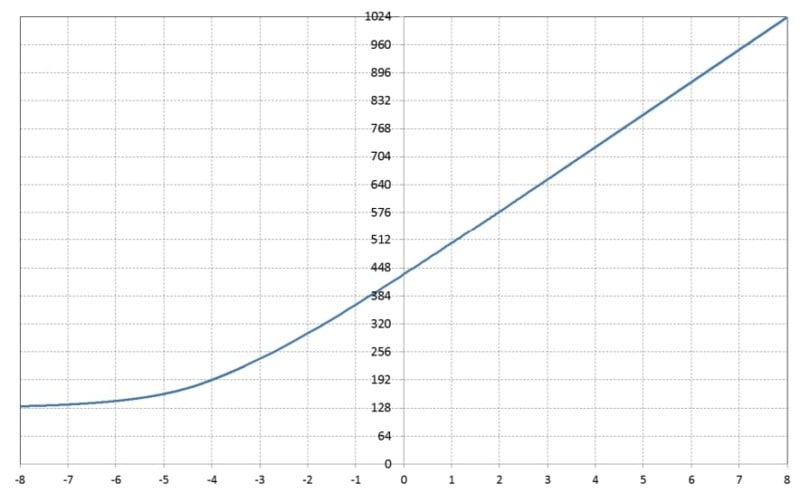
Based mostly on my prior expertise with the GH5, I’d say the GH6 is popping in roughly 0.5 to 1 EV higher efficiency, however provided that you’ve gotten DR Enhance enabled. At ISO 250, it really lags the GH5 (which had a local ISO of 400 in V-Log L). That is unlucky, nevertheless it’s possible that each one the opposite cumulative enhancements make up for this. You may as well simply shoot every little thing with DR Enhance and spend money on some good ND filters, which is what I might do.
I might have preferred to see inner BRAW, although that will merely not be doable relying on no matter agreements the businesses have. Whereas ProRes HQ is a good new characteristic, it doesn’t produce the identical flexibility as 12-bit BRAW. Its file measurement can be considerably bigger — DCI 4K (23.98p) ProRes 422 HQ is 190MB/s, whereas the very best high quality BRAW (Q0 or 3:1) on the similar settings is 108MB/s and goes all the way in which right down to 27MB/s (Q5 or 12:1).
On an analogous notice, I’m a bit confused as to why exterior BRAW just isn’t current — the Panasonic S1, S1H, S5, BS1H, BGH1, and GH5S all have the choice. Maybe it would come at a later date.
False colour is one thing else I’d wish to see in a firmware replace, and it will be good when you might report externally and internally to the CFexpress card for redundancy, however this may merely generate an excessive amount of warmth.
![]()
It might even be nice when selecting your video settings if the digicam would simply present three separate lists of the out there resolutions, the out there body charges, and the out there codecs/bitrates — the infinite record of every permutation is fairly annoying. Fujifilm appears to have performed this with the X-H2s and X-H2.
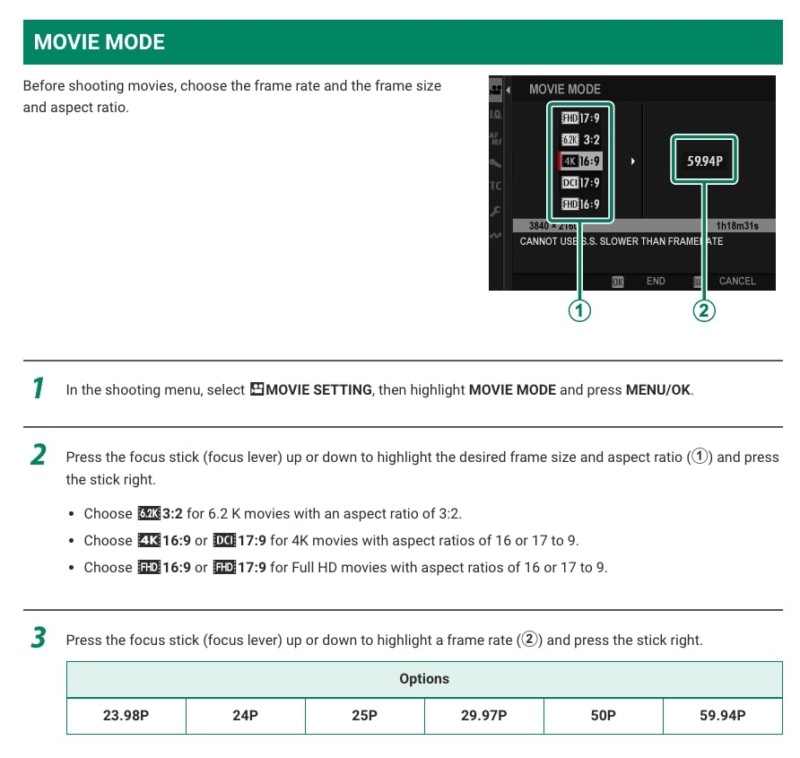
Audio
I’m not an audio particular person by any means, and I all the time use an exterior recorder, so there’s not a lot I can actually communicate to when it comes to high quality with any type of authority.
The GH6 has lots of new audio options which might be certain to please many customers, particularly run-and-gun shooters. With the Panasonic DMW-XLR1, you’ll be able to report as much as 4 channels (24 bit/96 kHz) — two through XLR and two through 3.5mm stereo mic jacks. There’s additionally onboard (24 bit/48 kHz) stereo scratch audio together with a devoted audio button on prime — urgent this lets you alter your settings and entry monitoring data.
![]()
Recording ranges could be set from -18dB to +12dB (the identical because the S1H). Utilizing my Shure VP89M shotgun mic through an XLR to three.5mm Stereo cable I used to be in a position to seize crisp audio with a really low noise ground. No, it doesn’t have the pliability of the 32-bit float that I’ve gotten used to, nevertheless it’s higher than some other inner audio seize I’ve used previously.
Most fun, to me, is the flexibility to enter or output timecode through the flash port to BNC adapter cable, which is included with the digicam.
One of many Finest Hybrids on the Market
Whereas I believe the Panasonic GH6 could be very heavy and really massive for a Micro 4 Thirds digicam resulting from its superlative video options, that doesn’t take away from the very fact it’s an excellent twin function digicam. So, whereas I don’t suggest it when you gravitate towards stills use — which I consider was by no means made for that viewers to start with regardless of what Panasonic claims — I heartily suggest it for video or hybrid shooters.
![]()
When you’re presently an proprietor of a GH5 or GH5 II, you’re in all probability questioning if the GH6 definitely worth the improve. The reply to that’s sure, completely. The entire cumulative upgrades — the wonderful LCD display screen, impressively redesigned physique, limitless recording, inner DCI 5.7K and open gate 5.8K ProRes 422 HQ, exterior ProRes RAW, barely higher rolling shutter, high-resolution handheld mode, exterior SSD recording, and Dynamic Vary Enhance, simply to call a number of — make for a seductive and substantial evolution inside an already sterling line of cameras.
Are There Options?
The obvious various is the OM System OM-1, a improbable digicam that’s bettered by no different digicam within the Micro 4 Thirds system — a minimum of for stills. Whereas the OM-1 does produce improbable video, it doesn’t have wherever close to the plethora of options contained in the GH6, although its autofocus monitoring and rolling shutter eclipse the GH6 because of its stacked quad-pixel AF sensor. Each cameras are available at $2,199, although the GH6 is — on the time of publishing this evaluate — on sale for $1,997.99.
When you’re primarily a stills photographer, go together with the OM System OM-1 — its picture high quality and colour, dynamic vary (particularly beneath ISO 800), autofocus, pace, IP53 weather-sealing, measurement, and weight distinguish it because the peerless various. There’s additionally an non-compulsory vertical battery grip for the OM-1, which the GH6 lacks. If autofocus monitoring in video issues so much to you, go together with the OM-1. When you search the very best caliber video, get the GH6 — in spite of everything, that’s who it was made for.
![]()
There are two different hybrid cameras price a glance as contenders: the brand new Fujifilm X-H2s and Fujifilm X-H2. Whereas the previous comes with a $300 larger price ticket in comparison with the GH6, it gives a bigger stacked sensor, 6.2K open gate (3:2) recording, exceptionally low rolling shutter, 14 and 12-bit video readout choices, stellar AF monitoring, exterior Blackmagic RAW (in addition to ProRes RAW), and better dynamic vary (for each stills and video). Its inexpensive brother, the X-H2, is $200 cheaper than the GH6 or OM-1, and gives 40MP of decision, 8K open gate as much as 30p, and DCI 4K/UHD video as much as 120p. Each characteristic Fujifilm’s much-lauded movie simulations in addition to its new F-Log2 gamma curve.
Whereas Fujifilm has a steady of wonderful lenses, there’s no query that the GH6 or OM-1 are a lower above for general choice and affordability. When you’re already within the Micro 4 Thirds ecosystem, it in all probability isn’t financially pragmatic to leap ship to a different mount. However when you’re ranging from scratch or searching for a second system (maybe one with a bigger sensor or higher DR), the X-H2 and X-H2s are nice alternate options at roughly the identical value level.
Ought to You Purchase It?
When you’re a hybrid shooter who values glorious video high quality — and particularly when you’re already invested in Micro 4 Thirds — sure, completely. Whereas the stills picture high quality trails the OM System OM-1, as does the autofocus monitoring and AI recognition, it’s nonetheless no slouch in that division (although video is a distinct story).
[ad_2]
